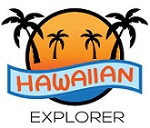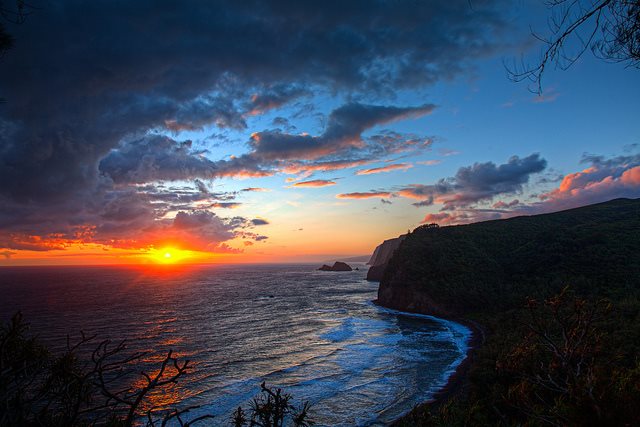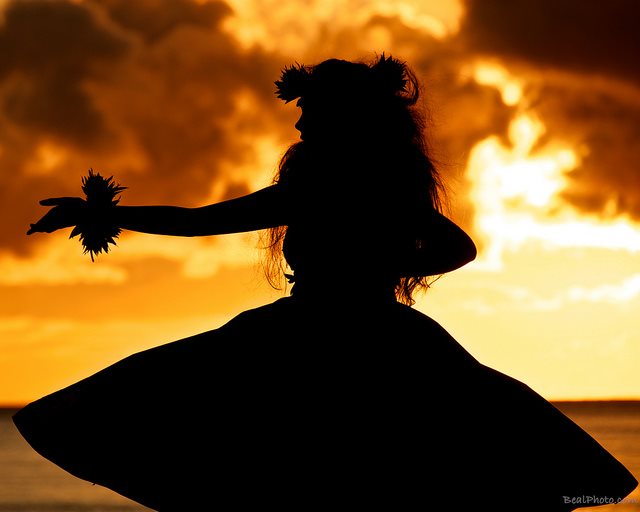The sea, the sand, the surf, and every day is another perfect day in Hawaii. It’s like no other place on the planet. With so much diversity in the land and wild, the people and the food, Hawaii is a place that you could visit every year and still discover something new and profound. All this beauty and buzzing activity has drawing millions of visitors to Hawaii each year.
The first ones arrived on primitive outrigger canoes, and they stayed. It’s easy to see why. When you look up at the sapphire blues and diamond-bright coastlines of Waikiki, you’ll understand why the early Polynesians settled on Hawaii and never looked back.
A Brief History
Credit: flickr.com/photos/floyd_noise/6951020182
Hawaii is made up of a chain of 8 distinct islands; Kauai, Oahu, Molokai, Lanai, Maui, Niihau, Kahoolawe and Hawaii, a.k.a. The Big Island. Honolulu is the state capital of Hawaii and is located on Oahu. Each island has its own vibrant personality and offers its own adventures, sights, and resorts.
The Polynesians arrived on Hawaii at around 600AD. They came with their own supply of pigs, dogs, bananas, sweet potatoes, and sugar. The British didn’t arrive until another thousand years later, headed by James Cook. This opened up trade and future colonial aspirations by the Europeans and Americans. In all actuality, Hawaii is more of a sovereign country of its own and there has been ongoing dispute to whether they were ever legally bound to being an official state of the U.S.
Hawaii is certainly an asset, though, with their production of sugar cane, pineapples, coffee, bananas, and macadamia nuts. All of which typically yield superior quality to the counterparts grown in California, especially with the harsh drought that has hit the state in recent years.
Language
Hawaii’s official state languages are English, first, and Hawaiian. Pidgin is the native dialect of the indigenous population, which is not the same as Hawaiian, which is more of a slang or dialect of regular English. Pidgin has faced adversity with the colonial pressures to conform the population with the rest of the United States.
Meanwhile, the Hawaiian dialect is very brief and hard to master. Aloha is a short and sweet word that has a multi-greeting and multi-gratitude purpose. It’s more of a feeling than anything, always positive and loving. This is reminiscent of Japanese dialect, where they have lots of multi-purpose words or phrases for positive feelings and emotion.
Hawaiian Culture
flickr.com/photos/sel/6090644550
Hawaii is a very accepting and family-oriented culture. People from many different ethnicities and traditions live here. They are, for the most part, a Christian-based society, but you will find all types of customs, beliefs, and traditions, that could even vary from one neighborhood to another.
The flower lei is one of the oldest customs passed down in Hawaii. You step off the plane, greeted by a beautiful necklace of flowers. Now that is a great way to start a vacation. Most people wear them around full-time, there’s no shortage of beautiful flowers being handed out by beautiful people!
Points of Interest
Diamond Head is considered to be Hawaii’s most famous landmark. Known in Hawaiian as Le’ahi because the summit supposedly resembles the forehead (lae) of yellow-fin tuna (‘ahi). In the late 1700’s, when European traders thought they had found diamonds on the slope of the crater, which they coined as Diamond Head. With that said, it turns out there were no diamonds, only crystals that looked like them.
The Pearl Harbor Memorial is located over the sunken remains of the the USS Arizona. The museum is quite the architectural display and everything is presented beautifully in honor of those that have passed. The guided tour of the USS Arizona Memorial includes a 23-minute documentary film, a short boat trip, and a self-guided exploration of the museum itself.
Visiting Hanauma Bay Nature Reserve will get you an education about the area and teach you about conservation programs and other activities you can do to help local Hawaiians. Wildlife reserves are great for family activities and to remind children of how amazing our planet is and how important it is to protect it.
Another great place to connect with the natural wildlife is the Amy B. H. Greenwell Ethnobotanical Garden. The garden contains over 200 species of endemic, indigenous, and Polynesian-introduced plants that grew in Kona before Captain James Cook’s arrival. On certain days it is possible to take a guided tour during which the use and significance of the more important plants are explained. Many times the diversity of Hawaii is overlooked, due to the massive, volcanic landscape.


